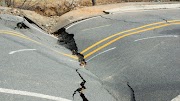Introduction
Earthquakes are natural disasters that can occur suddenly in any part of the world. Being prepared for these events is important for minimizing casualties and damage. While specific protocols may vary due to geographical conditions and local considerations, there are universal principles and safety measures that individuals around the world should take into account during an earthquake. This article aims to explain these common practices.
Remaining Calm
Maintaining composure during an earthquake is highly important. Panic can lead to making wrong decisions and potentially creating dangerous situations. By staying calm, individuals can respond more effectively to the situation and protect themselves.
Taking Shelter
One of the fundamental actions during an earthquake is seeking shelter. Whether indoors or outdoors, you can take cover under a sturdy piece of furniture, such as a table or countertop, to protect yourself from falling debris. If you're outside, choose a safe area away from tall structures and potential hazards.
Avoiding Elevators
Avoiding the use of elevators during earthquakes is a recommendation that applies worldwide. Elevators can experience malfunctions or become stuck during seismic activity, posing risks to those inside. Using staircases is a safer option for emergencies.
Staying Away from Glass
During an earthquake, it's advisable to avoid standing near glass windows or glass doors. Glass can break and potentially cause injuries. Instead, find a place away from glass objects where you can take cover.
Exiting Vehicles Safely
If you're driving during an earthquake, try to stop in a safe area and avoid hazards like power lines whenever possible. Once your vehicle has stopped, remain inside until the shaking stops and then proceed cautiously.
Responding to Additional Threats
Earthquakes can trigger secondary hazards, such as fires or gas leaks. If you hear a fire alarm or smell gas, leave the building immediately and move to a safe distance. It's important to follow the instructions of emergency response teams and authorities.
Staying Informed
Staying connected to reliable news sources during and after an earthquake is extremely important. This can help you make informed decisions and stay up to date with the latest developments.
Conclusion
In conclusion, while specific actions during earthquakes can vary depending on cultural norms and local conditions, there are universal safety measures that people worldwide should consider. Remaining calm, seeking shelter, avoiding elevators, and being cautious of potential secondary threats are fundamental practices. Following official guidelines and the expertise of local emergency authorities is key to effectively navigating these challenging situations and ensuring personal safety and community resilience.


_edit_1047335234717271%20(1).jpg)
_edit_1047335234717271.jpg)


_edit_1047335234717271%20(1).jpg)
0 Comments